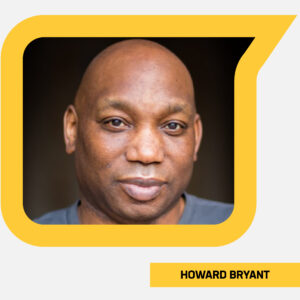GSM Live Insights: Looking Forward - A Renaissance for American Baseball
From youth leagues to the professional ranks, baseball’s once vibrant connection to Black America has eroded. Recently, the sport has increased its efforts to rebuild that relationship. But many challenges remain, including a pay-for-play youth system that leaves too many Black children behind, a neglected talent pipeline that has lost Black athletes to other sports, and narrow, barrier-strewn pathway to Major League Baseball managerial positions for qualified candidates of Color.
In Latin America, Asia, and elsewhere, baseball has successfully broadened its appeal across racial and cultural lines. Can it do the same at home? And in the 21st century, can a sport steeped in tradition and nostalgia become more diverse and inclusive in new ways?
“They have to learn how to play within Whiteness because the game is too rigid.”

Howard Bryant, award-winning author and journalist, explains how the sport has struggled to pick up culture. He mentions that because these sports were raised in “Whiteness” that it becomes harder for them to adapt to people of Color. Bryant notes how “street” moves have become acceptable in other sports, but with MLB it has not progressed in the same way. While other cultures and countries around the world have become stronger examples of the simple joy of baseball by adapting to its players, has American baseball hit a plateau?
“Players can bring another level of change.”
Lonnie Murray, an MLBPA Certified Player Agent, discusses how sport can effect an audience on a community level. This sense of community can flourish when the players themselves put forth that effort to make a difference. For many major leaguers, this type of change is not typically their top priority. Sport has the power to connect to its audiences on a deeper level, will MLB’s star players step up and become more involved?
“We’re going to find people that check those boxes. Now, tell us why you’re not gonna hire them.”
Kerrick Jackson, President of the MLB Draft League, discusses the existing shortfalls in the hiring process, particularly at the college baseball level. He shares his own experience with barriers to mobility despite meeting the purported qualifications and experience that athletic directors seek. He challenges the idea of “better fit” and as the chair of the diversity committee for the American Baseball Coaches Association, seeking greater dialogue with athletic directors about their criteria for hiring coaches.
“It becomes a socioeconomic issue instead of an issue of our youth not wanting to play the game.”
Royal Clayton, former MLB player and coach, elaborates on the fact that it is access, rather than desire, that creates a challenge for Black youth involvement. He explains that with baseball, the need for equipment, clubs and travel can add up to a costly amount, making it almost impossible for some families to get involved. He states that this can be detrimental for children’s exposure to the game at that entry level.
“A sporting event is supposed to have a fun atmosphere, and ballparks lack in that.”
Shakeia Taylor, freelance sports writer and Global Sport Matters contributor, explains that the ballparks of MLB are lacking in culture and “coolness.” She notes the frustration of culture being used as a marketing tool, only to be balked at on the field or in the ballpark. Taylor goes on to say that the refusal to embrace what brings in a younger audiences is a large part of what is stunting the sport’s growth.
More from our October Digital Issue: The Athlete’s Journey
VIEW FULL ISSUE
Scott Brooks leads an insightful discussion with Howard Bryant, Lonnie Murray, Royal Clayton, Kerrick Jackson and Shakeia Taylor as these experts on baseball discuss how we can move from pastime to present, and examine the opportunities MLB has to reinvest and reconnect with those who have disappeared from the field of play, reinvigorating the sport to better reflect the America we see today.






